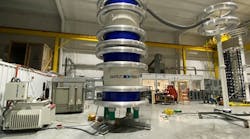CURRENT Group, LLC has announced advanced distribution current sensing and remote underground (URD) fault detection. Using the three components of a Smart Grid -- high-speed communications, embedded advanced sensing and distributed intelligence -- CURRENT is able to accurately detect the location of underground cable faults allowing utilities to reduce outage time when a cable fails.
The California Energy Commission (CEC) has reported approximately 40% of all electricity outages are the result of underground failures. The CEC identified failing underground cable as one of the most critical reliability problems faced by utilities throughout the country as many of the installed cables are nearing the end of their useful lives.
“The improved efficiency and reliability from our underground fault detection solution is a good example of why the new federal energy legislation emphasized Smart Grid as the National Policy.” said Tom Casey, CURRENT’s chief executive officer. “The federal government and forward thinking utilities and regulators recognize that you need high speed communications, sensing and distributed analytics to make a meaningful improvement in the efficiency, reliability and the environmental impact of electricity. The recent announcement by Xcel Energy on their Smart City is just the first of several large utilities deploying out our Smart Grid solution.”
A recent KEMA newsletter reported the successful demonstration of CURRENT’s fault detection system at KEMA Powertest’s facilities, “If an MV (medium voltage) fault is detected, the system localizes it to the span between two transformers and reports that location back to the operations center just milliseconds after the fault has occurred.”
The CURRENT Smart Grid solution makes continuous detailed measurements of voltages and currents using sensors throughout the distribution system. Distributed intelligence within the sensor systems identifies measurements that may indicate system problems, triggering the messaging of these measurements through CURRENT’s low latency, high bandwidth communications network. CURRENT Smart Grid software performs advanced analyses on these measurements to identify operational problems and overloads, and to predict imminent distribution system component failures. Alerts are sent automatically to the appropriate person in the utility or crews can be automatically dispatched.

